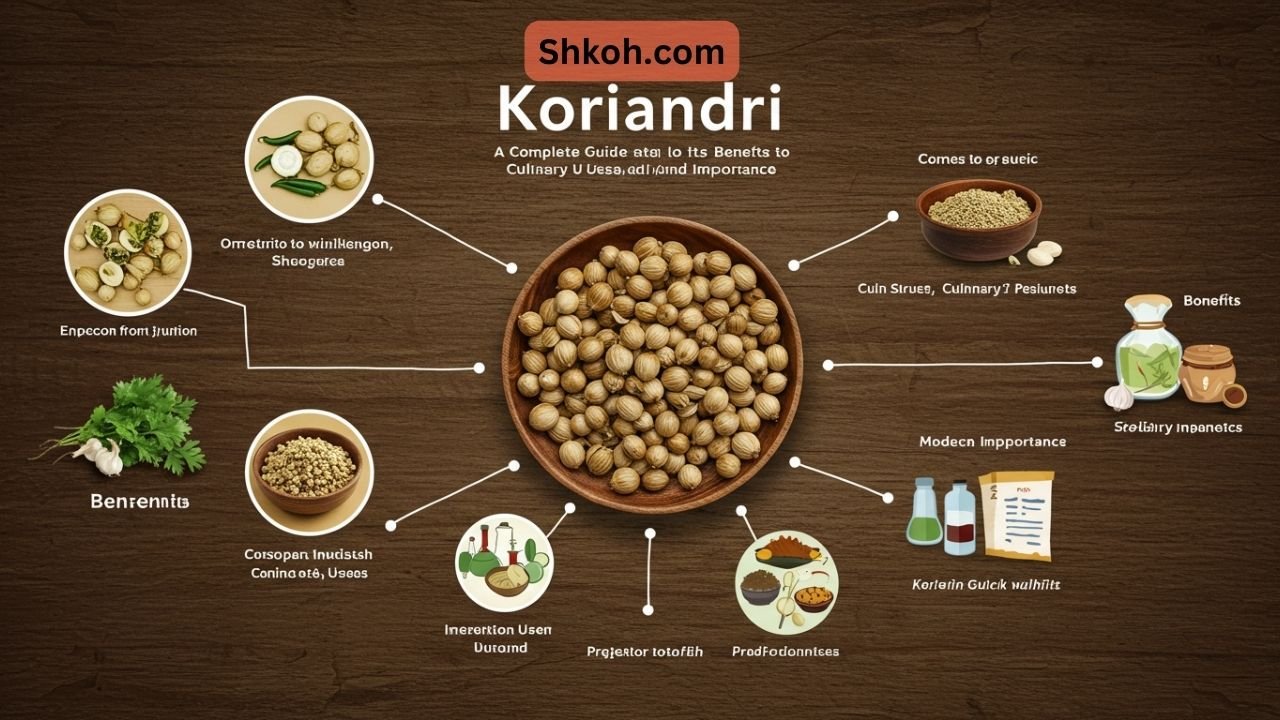Koriandri: A Complete Guide to Its Benefits Culinary Uses and Modern Importance
Introduction to Koriandri
Koriandri, often recognized as coriander in English, is one of the most widely used herbs and spices in the world. Its unique flavor, rich nutrition, and medicinal properties have made it a staple in kitchens and traditional healing systems for centuries. Whether added to curries, salads, or natural remedies, continues to hold its importance in modern lifestyles. This article explores the many aspects from its origins to its place in global cuisines and wellness.
Historical Background of Koriandri
The story of dates back more than 3,000 years. Ancient Greeks and Romans used not only as a seasoning but also as a preservative for food. Over centuries, trade routes spread across Asia, Europe, and the Middle East, making it one of the earliest globally recognized spices.
Culinary Value of Koriandri
it is valued for its ability to enhance flavors in multiple ways.
Seeds and Powder
Koriandri seeds, either whole or ground, add a warm, citrus-like flavor to food. They are a key part of spice blends such as curry powders and masalas.
Role in Global Cuisines
- South Asia: Essential in curries, pickles, and chutneys.
- Middle East: Blended into spice mixes and lentil dishes.
- Latin America: Known as cilantro, used in salsas, tacos, and guacamole.
- Europe: Incorporated in breads, marinades, and sausages.
This global adaptability makes koriandri a universal flavor enhancer.
Nutritional and Health Benefits of Koriandri
Beyond its taste, koriandri is highly nutritious and beneficial for health.
- Rich in Vitamins and Minerals – contains vitamin C, vitamin K, potassium, and iron.
- Supports Healthy Digestion – Traditionally, seeds have been used to ease bloating and indigestion.
- Helps Balance Blood Sugar – Some studies suggest may assist in stabilizing glucose levels.
- Boosts Immunity – With its antioxidant content, it helps strengthen the immune system.
- Promotes Healthy Skin and Hair – Its antibacterial properties are useful in skincare remedies and hair health treatments.
Koriandri in Traditional Medicine
For centuries, it has been central to natural medicine practices.
- Ayurveda: Used for cooling the body and improving digestion.
- Chinese Medicine: Applied in teas to relieve colds and stomach discomfort.
Cultural Significance of Koriandri
Koriandri carries symbolic meaning in many societies. In Latin American countries, fresh leaves represent zest and freshness in food culture. The Middle East embraces in daily meals, showcasing its long-standing role in hospitality and tradition.
Growing and Preserving Koriandri
Growing at Home
it is one of the easiest herbs to grow. It thrives in pots or garden beds with sunlight and well-drained soil.
- Fresh leaves should be refrigerated or frozen to retain freshness.
- Seeds should be stored in airtight jars away from heat and light.
Proper storage ensures koriandri maintains its flavor and nutritional value for longer.
Modern Uses of Koriandri
In today’s health-conscious world, koriandri has found a place in wellness trends.
- Herbal teas for detoxification
- Essential oils for relaxation and skincare
- Health supplements promoting digestion and immunity
- Organic food products as a natural flavoring
This shows that is not only a traditional spice but also a modern wellness companion.
Conclusion
Koriandri is a remarkable herb that bridges the gap between food, health, and culture. From its ancient presence in Egypt to its modern use in global cuisines and wellness products, it continues to be one of the most valued plants. Incorporating koriandri into your daily diet is an easy way to enjoy its flavor and reap its numerous health benefits.
Whether you enjoy in fresh salads, spiced curries, or herbal remedies, its impact remains timeless and universal. Truly, it is more than just an herb it is a heritage of health and taste.






